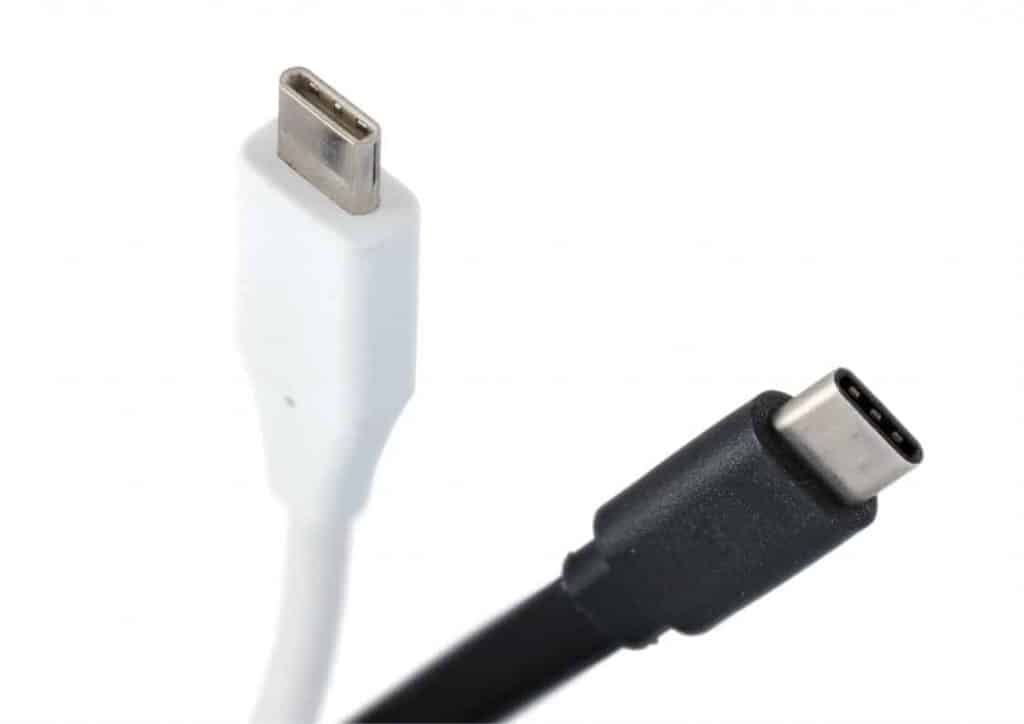How To Daisy Chain Monitors Without DisplayPorts {ANSWERED}
There’s no better way to boost your productivity working at a computer than by adding another monitor (or two) into the mix.
Dual monitor setups have been shown to improve productivity and efficiency by 60% or more – and adding three or four monitors to your solo monitor set up can skyrocket productivity even more so!
Of course, adding all these monitors (usually) means adding a lot of extra cables to connect them.
You have to have multiple ports in your computer to handle these monitors, and then you have to worry about cable management.
Unless of course you decide to daisy chain your monitors. This is usually pulled off with a DisplayPort connection.
But that isn’t necessarily the only way.
USB-C (Windows) and Thunderbolt 3 (Mac and Windows) cables can also transmit display and data between monitors without connecting directly to the computer, thus allowing multiple screens to be daisy chained in the absence of a DisplayPort.
Thunderbolt 3 adopted the same shape connector as USB-C (vs Thunderbolt 2 which had a Mini DisplayPort connector) allowing it to be used across both Macs and Windows machines.

Why daisy chain monitors in the first place?
Before we get into the meat and potatoes of how to daisy chain your monitors, let’s go over what daisy chaining is and why it’s so beneficial.
Daisy chaining basically involves connecting your monitors to one another and then to your computer or laptop with a single cable, rather than directly connecting all of those monitors individually to your computer or laptop.
This significantly simplifies the connection process.
For example, let’s say that you have three monitors you’re looking to connect to a single computer.
Traditionally, you’d have to have three available ports to connect three individual monitor cables (usually over HDMI, DVI, or DisplayPort connections) – and that would mean three long cables running from each individual monitor to your computer directly.
With a daisy chain set up, though, only the first monitor is connected to your computer (and it only takes up a single connection on your computer).
The second monitor is connected directly to the first monitor, and the third monitor is connected directly to the second monitor.
This keeps cable management easy, organization easy, and frees up a lot of space when it comes to available ports on your PC.
Perfect for a when building triple monitor setup.
DisplayPorts make daisy chaining effortless – but do you really need them?
One of the big reasons for the development of the DisplayPort connection was to allow for daisy chaining in the first place.
Traditional HDMI, VGA and DVI connections don’t have this capability.
DisplayPort, on the other hand, was purpose built for this exactly – and it is the easiest (and certainly the most effortless) way to connect multiple monitors to one another.
It’s not the only way to daisy chain your monitors, though as USB-C and Thunderbolt 3 cables also allow displays to be connected together in a daisy chain formation.
Note!!! Using a USB-C cable on Mac will only allow you to mirror displays only rather than extend them.
How to daisy chain monitors with Thunderbolt 3 cables
- Check you have Thunderbolt 3 ports by looking for the Thunderbolt symbol alongside a USB-C shaped port
- Take your Thunderbolt 3 cable and plug it into your computer or laptop. Take the other end of that first cable and plug it into Monitor #1
- Get your second Thunderbolt cable and start by plugging it into the second Thunderbolt 3 port on Monitor #1 and then connect that to Monitor #2
- Rinse and repeat this process for as many monitors as you’re looking to connect. Even with a dedicated graphics card your processing power will soon top out if you add more than 5 high resolution screens
- After you have everything daisy chained up and ready to go all you have left to do is turn your computer on and run through the multi-monitor configuration process. Your computer will identify each of your individual monitors (with a big, bold number on each screen) so that you know which is which
The process of daisy chaining Windows machines using USB-C cables is exactly the same as laid out above.
Similar posts
JBL Speaker Hidden Features: JBL Charge 4 & JBL Pulse 4
I’m a sucker for purchasing a new piece of technology and using it straightaway without understanding the full extent of its features. Why am I paying for all of the features and…


